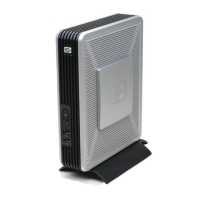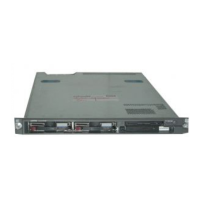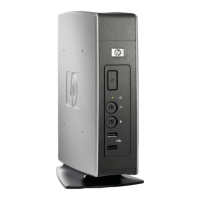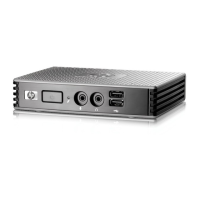In this configuration, moving the mouse pointer off the right side of the thin client A monitors will cause
it to appear on the upper 1/3 of the left side of the thin client D monitors. Similarly, moving the mouse
pointer off the right side of the thin client B monitors will cause it to appear in the middle 1/3 of the left
side of the thin client D monitors. Finally, moving the mouse pointer off the right side of the thin client C
monitors will cause it to appear in the lower 1/3 of the left side of the thin client D monitors.
NOTE: Desktop windows cannot span the thin clients, or be moved between client computers.
Typically, each thin client will create windows based on its connection to an associated remote computer,
and there won’t be a need to move windows between thin clients.
The thin client physically connected to the keyboard and mouse is referred to as the Aggregation Server.
The other thin clients are referred to as Aggregation Clients. When the mouse pointer is on one of the
Aggregation Clients, the mouse and keyboard inputs (from the Aggregation Server thin client) are
encrypted, and sent over the network to the selected Aggregation Client. The Aggregation Client
decrypts the mouse and keyboard inputs, and passes the inputs to the local desktop of the Aggregation
Client.
Client Aggregation is based on an open source software package called Synergy, with encryption
provided by a package called stunnel.
NOTE: Because the Synergy and stunnel software is also installed on the HP dc72 Blade Workstation
Client and the HP dc73 Blade Workstation Client (running Embedded OS versions 9.xx and 10.xx),
these client computers can be interconnected to the HP gt7725 thin client in Client Aggregation
configurations.
Configuring Client Aggregation
NOTE: Client Aggregation must be configured individually on each thin client—on the Aggregation
Server and on each Aggregation Client.
Client Aggregation configuration is a two-step process:
1.
Configuring the Aggregation Clients on page 79—From one to three Aggregation Clients can be
configured.
2.
Configuring the Aggregation Server on page 79
78 Chapter 2 Installation ENWW
